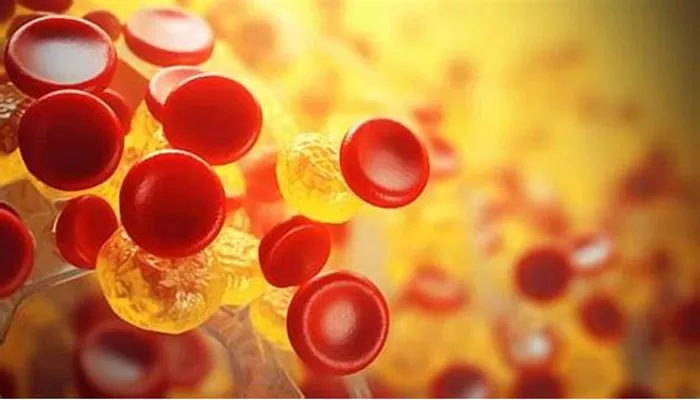Cholesterol is a type of fat found in the blood, and its levels can significantly impact cardiovascular health. Low-Density Lipoprotein (LDL) cholesterol is often labeled as “bad” cholesterol because high levels can lead to plaque buildup in the arteries, increasing the risk of heart disease and stroke. One of the key strategies for managing LDL cholesterol levels involves lifestyle modifications, and exercise plays a crucial role in this aspect. In this article, we will explore how exercise affects LDL cholesterol, examining current research and practical recommendations for incorporating physical activity into your daily routine.
What Is LDL Cholesterol?
Before diving into how exercise influences LDL cholesterol, it’s essential to understand what LDL cholesterol is and why it’s important. LDL cholesterol carries cholesterol from the liver to cells throughout the body. However, when there is too much LDL cholesterol in the blood, it can deposit in the walls of arteries, forming plaque. This plaque buildup narrows the arteries and can lead to atherosclerosis, a condition that increases the risk of heart attacks and strokes.
How Exercise Affects LDL Cholesterol
Exercise has been widely recognized for its benefits on overall health, but its impact on LDL cholesterol is particularly noteworthy. Here are some of the ways exercise can influence LDL levels:
1. Enhancement of Lipid Metabolism
Physical activity helps to enhance lipid metabolism. During exercise, the body uses fatty acids for energy. Regular exercise increases the enzyme activity that helps break down LDL cholesterol. This process reduces the amount of LDL cholesterol in the bloodstream. Studies have shown that consistent physical activity leads to a reduction in LDL cholesterol levels by promoting its clearance from the bloodstream.
2. Increase in High-Density Lipoprotein (HDL) Cholesterol
Exercise not only impacts LDL cholesterol but also increases High-Density Lipoprotein (HDL) cholesterol, often referred to as “good” cholesterol. HDL cholesterol helps remove LDL cholesterol from the blood by transporting it to the liver, where it is metabolized and excreted. Higher levels of HDL cholesterol are associated with a lower risk of heart disease. By increasing HDL levels, exercise indirectly helps reduce LDL cholesterol levels.
SEE ALSO: Can High Cholesterol Be Fixed with Exercise?
3. Reduction of Body Fat
Exercise contributes to weight loss and reduction of body fat, both of which are associated with lower LDL cholesterol levels. Excess body fat, particularly around the abdomen, is linked to higher levels of LDL cholesterol. Physical activity helps to reduce body fat and improve overall lipid profiles, which includes lowering LDL cholesterol.
4. Improved Insulin Sensitivity
Regular exercise improves insulin sensitivity. Insulin resistance is a condition that can lead to higher levels of LDL cholesterol and other lipid abnormalities. By enhancing the body’s ability to use insulin effectively, exercise helps to maintain healthier cholesterol levels.
Evidence From Research
Several studies have investigated the relationship between exercise and LDL cholesterol. Here are some key findings:
1. Aerobic Exercise
Aerobic exercises, such as walking, jogging, and swimming, have been shown to have a positive effect on LDL cholesterol levels. A study published in the Journal of the American College of Cardiology found that participants who engaged in regular aerobic exercise experienced a significant reduction in LDL cholesterol levels compared to those who did not exercise.
2. Resistance Training
Resistance training, including weightlifting and bodyweight exercises, also impacts LDL cholesterol. Research published in the American Journal of Cardiology indicates that while resistance training primarily improves muscle strength, it also contributes to a reduction in LDL cholesterol when combined with aerobic exercise.
3. High-Intensity Interval Training (HIIT)
High-Intensity Interval Training (HIIT) involves short bursts of intense activity followed by periods of rest. This type of exercise has gained popularity for its efficiency and effectiveness. Studies have shown that HIIT can lead to improvements in LDL cholesterol levels, often comparable to or exceeding those achieved through traditional aerobic exercise.
Practical Recommendations for Incorporating Exercise
To effectively lower LDL cholesterol levels, incorporating regular exercise into your routine is essential. Here are some practical tips for getting started:
1. Aim for Consistency
Consistency is key to achieving and maintaining lower LDL cholesterol levels. Aim for at least 150 minutes of moderate-intensity aerobic exercise or 75 minutes of vigorous-intensity exercise per week. This can be broken down into manageable sessions, such as 30 minutes a day, five days a week.
2. Include a Mix of Exercises
Incorporate a variety of exercises to maximize benefits. Combining aerobic exercises with resistance training can improve overall cardiovascular health and enhance cholesterol management. Consider activities such as walking, cycling, swimming, and strength training exercises.
3. Gradually Increase Intensity
If you are new to exercise, start slowly and gradually increase the intensity and duration of your workouts. This approach reduces the risk of injury and allows your body to adapt to the new activity levels.
Conclusion
Exercise plays a significant role in managing LDL cholesterol levels and improving overall cardiovascular health. By enhancing lipid metabolism, increasing HDL cholesterol, reducing body fat, and improving insulin sensitivity, regular physical activity contributes to lower LDL cholesterol levels. Research supports the positive impact of various forms of exercise, including aerobic exercise, resistance training, and high-intensity interval training.


